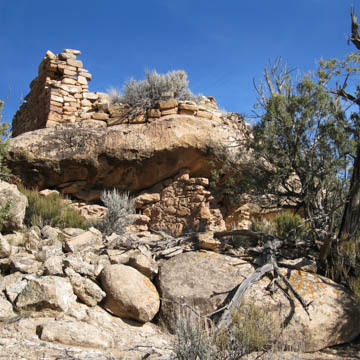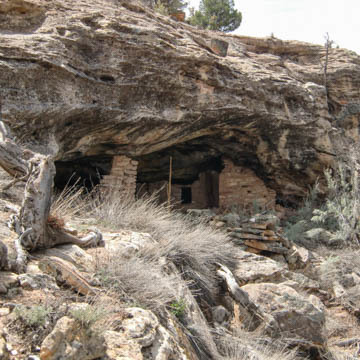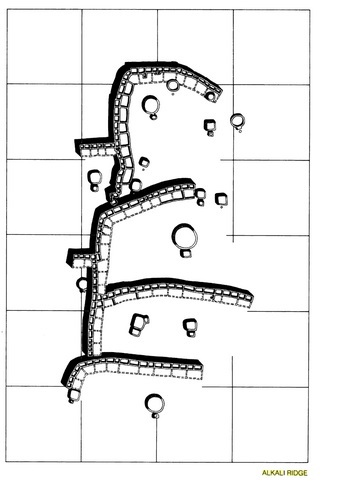Alkali Ridge

Source: Shundana Yusaf, “Alkali Ridge” [Blanding, Utah], SAH Archipedia, eds. Gabrielle Esperdy and Karen Kingsley, Charlottesville: UVaP, 2012—, http://sah-archipedia.org/buildings/UT-01-037-0008. Accessed 2018-12-17.
Alkali Ridge (Alkali Point) is a National Historic Landmark located in San Juan County near the city Blanding in the state of Utah. The site was found and dug by Archaeologist John O. Brew. The remains in the site show the transition of Ancestral-Pueblo culture from hunter-gatherer to a horticulture lifestyle. (c. 700 C.E – 1150 C.E.)
Alkali Ridge (also known as Alkali Point), is one of the sites archaeologist John O. Brew excavated in Utah (1932-1934). The site is near the city Blanding, Utah in the San Juan county (consisting of the southeast corner of Utah). The Four Corners region of the southwest United States was where the ancestral Pueblo or “Anasazi” resided from c.1000 B.C. until c. 1300 A.D. when, for unknown reasons, they left Utah. The Alkali Ridge site contains the remains of a village full of ceramics and pottery pieces. The village spans an area of 240x500 feet and provides an average density of 200 remain sites (ruins, pottery) per square mile.
The site has a wide time range due to the ruins spanning from the Basketmaker III period (c.450 C.E.-750 C.E.) until the Pueblo II period (c.900 C.E.- 1150 C.E). The site shows the transition from pit dwellings, a time when the Anasazi culture were hunter and gatherers, to a change to surface homes and a horticultural lifestyle. Also found are several cliff dwellings, structures built into the sides of cliffs with walls and covers. The village consisted of about 185 units, situated in four rows. The older buildings and pit structures were built from mixtures of mud and water, formed into bricks. Newer buildings began using better stone masonry. Each group had a newer pit structure called a kiva, which served for ceremonial and communal purposes. These newer pit structures were often deeper than their predecessors and had a room that connected to the main chamber. Several rooms were used for the storage of corn. Ceramics of varying style can be found throughout the ruins. Roads (though worn terribly down by time) link the various cluster of villages in this area and are thought to have served the purpose of trade connections to the other scattered villages of the Puebloan I-II periods c.750 C.E. to c.1150 C.E.
Alkali Ridge was made a National Historic Landmark in 1964. It is under the jurisdiction of the Blanding Bureau of Land Management.
Images

Source: Shundana Yusaf, “Alkali Ridge” [Blanding, Utah], SAH Archipedia, eds. Gabrielle Esperdy and Karen Kingsley, Charlottesville: UVaP, 2012—, http://sah-archipedia.org/buildings/UT-01-037-0008. Accessed 2018-12-17.

Source: Shundana Yusaf, “Alkali Ridge” [Blanding, Utah], SAH Archipedia, eds. Gabrielle Esperdy and Karen Kingsley, Charlottesville: UVaP, 2012—, http://sah-archipedia.org/buildings/UT-01-037-0008. Accessed 2018-12-17.
